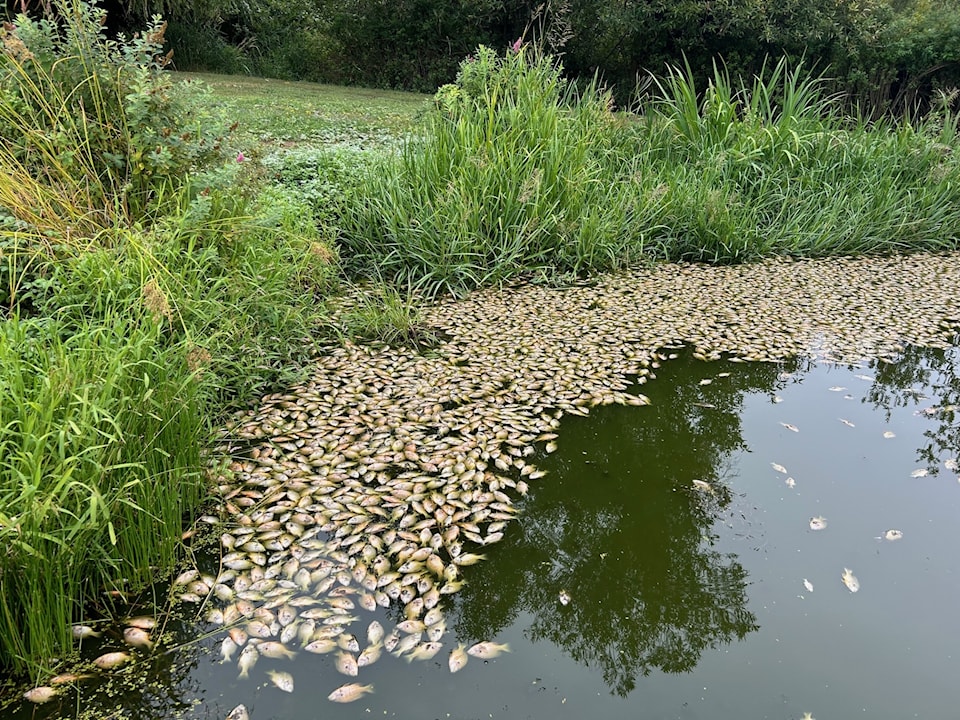A massive fish die off involving thousands of fish has struck Somenos Lake.
The fish dead fish are mostly pumpkinseed fish, which is an invasive species, along with several hundred coho salmon and fewer numbers of other species.
Colleen Terlien, a board member at the Somenos Marsh Wildlife Society, lives near the lake along with her husband Paul, who is also a society member.
She said the die off began on Saturday Aug. 10, and culminated in the thousands that were floating on the surface of the lake by Sunday morning.
“It’s unbelievable,” Terlien said. “Some were still gasping at the surface Monday morning. Society president Paul Gowland has been there all day on Monday with some others trying to figure out what is going on, but it’s believed to be related to a lack of oxygen in the water. I’ve never seen anything like it.”
Paul Fletcher, another member of the society, said he has seen fish die off in Somenos Lake before, but not at the level of this incident.
“It’s really quite shocking,” he said.
“It’s currently under investigation, but it’s likely due to poor water quality and oxygen depletion that may be related to recent changes in the weather. The dead fish are going to have to removed, and that’s a provincial responsibility.”
Fletcher said the one good thing is that the vast majority are the invasive pumpkinseed fish, and this one incident may have killed most of them that were in Somenos Lake.
Gowland said a conservation officer from the province was taking water samples from the lake and streams that feed it on Monday, and they will be tested in a lab.
But he said these types of die-offs are not uncommon in Somenos Lake at this time of year, but this the biggest he has ever seen.
"It's a shallow lake and lots of fertilizers with nutrients from farms and other sources entering the water and then algae grows, and that causes the top of the water to be warm while the water near the bottom of the lake is cooler during the later part of the summer and has very little oxygen," Gowland said.
"Then when we get a bit of wind, the water mixes together and the oxygen can drop significantly. Test were taken soon after the die off and it was determined that the oxygen was really low, but it has come up since then.When fall and the rains come, the lake will be good for fish again from about October through to March when the weather starts to warm up again."
A statement from the Ministry of Environment and Climate Change confirmed that the reason for the fish kill was most likely the result of low oxygen and warm water temperatures.
The ministry said the best practice in this situation is to allow the dead fish to remain in their natural environment to decompose for ecological reasons.
"Allowing natural decomposition is beneficial because decomposing organisms contribute nutrients to the ecosystem," the ministry said.
"We thank the community for alerting us to this incident and appreciate the work that was done by the Somenos Marsh Wildlife Society."



